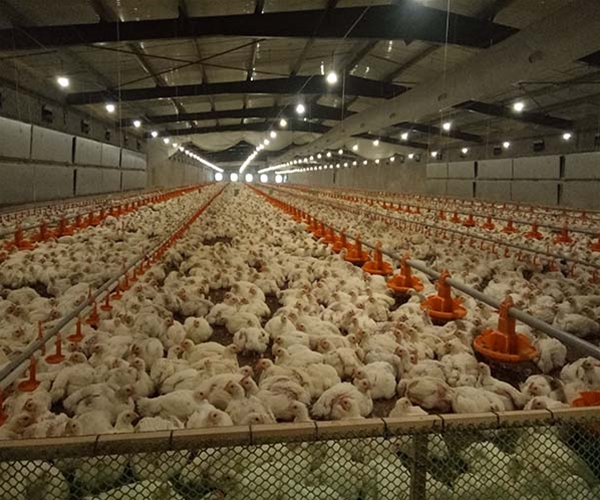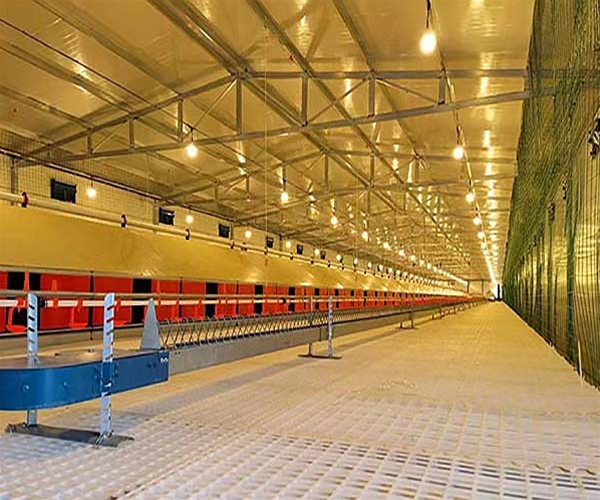As consumer awareness of food safety and health increases, the differences between traditional chicken farming and industrial farming methods have gained more attention. While both provide chicken meat, they differ significantly in farming methods, environmental conditions, growth cycles, meat quality, and economic benefits. This article will explore these farming methods in detail, comparing their advantages and disadvantages to help consumers make informed choices.
Farming Methods: Traditional vs. Industrial Chicken Farming
Traditional Chicken Farming Methods
Traditional chicken farming typically occurs on small farms in rural areas, using more natural methods. These chickens are usually free-range, with ample space to roam, forage, and display natural behaviors. The farming environment is less controlled than in industrial farms, but it provides a more natural lifestyle for the birds. This method typically involves simple, functional equipment such as water systems, feeders, and chicken coops.
Industrial Chicken Farming Methods
In contrast, industrial chicken farming operates on a much larger scale with factory-style management. Chickens are confined to small cages, offering them little room to move. Their movement is restricted, and food and water are provided through automated systems. While this method allows for mass production, it limits the chickens’ natural behaviors, which can affect their health and well-being.
Growth Cycles and Farming Efficiency
A key difference between traditional and industrial chicken farming is their growth cycles.
- Traditional Chicken Farming: Traditional chickens have a longer growth cycle, usually taking 150 to 180 days to reach market weight. This slower growth process allows the chickens to build more muscle and fat, resulting in more tender meat. The method focuses on the natural growth of the birds, with less emphasis on speed.
- Industrial Chicken Farming: Industrial farming aims for speed and efficiency. Chickens raised in industrial farms can reach market weight in just 56 to 63 days. By optimizing feed and carefully controlling the growing environment, industrial farming encourages rapid growth. However, the confined space and fast growth mean the meat tends to be firmer and lacks the tenderness and flavor of traditionally farmed chickens.
Meat Quality and Farming Practices
Meat quality is a major factor when consumers choose chicken. Traditional chickens typically have more tender meat with better flavor. This is due to the chickens’ increased activity levels and slower growth. Additionally, their feed often includes natural grains and vegetables, which contribute to better nutritional content in both the meat and eggs.
In contrast, industrial chickens have firmer meat with less flavor. The restricted movement and rapid growth result in meat that is not as tender. Moreover, the feed used in industrial farming often includes hormones, antibiotics, and additives, which may negatively affect the meat’s quality and nutritional value.
Economic Benefits and Market Considerations
Although traditional farming methods are often seen as more sustainable and animal welfare-friendly, they come with higher production costs. The longer growth cycles and larger space requirements increase expenses. As a result, traditionally farmed chicken tends to be more expensive, but its superior meat quality and perceived health benefits make it appealing to consumers who prioritize food quality.
In contrast, industrial farming methods offer significant economic advantages. The faster growth rate and more efficient use of space lead to lower production costs. This makes industrial chicken more affordable for consumers, especially those looking for budget-friendly options.
Sustainable Farming Methods: Looking to the Future
As sustainability becomes more important in modern agriculture, many farms are adopting sustainable farming methods to reduce environmental impact while maintaining production efficiency. These practices include crop rotation, organic feed, and using technology to monitor animal health and welfare.
Incorporating sustainable practices into both traditional and industrial farming can help reduce the environmental footprint of large-scale chicken production. For example, sustainable farming methods can reduce the need for harmful pesticides and antibiotics, improve waste management, and promote better animal welfare practices.
Conclusion: Choosing the Right Farming Method
Both traditional and industrial chicken farming methods have their pros and cons. Traditional chickens are ideal for consumers who value high-quality, natural products and are willing to pay more for better taste and nutritional content. On the other hand, industrial farming methods provide an efficient, cost-effective way to meet high demand for chicken, but often sacrifice animal welfare and meat quality.
When choosing chicken products, consumers should consider their priorities—whether they are focused on quality, sustainability, cost, or convenience. Understanding the differences between farming methods can help consumers make more informed decisions about the food they consume.


